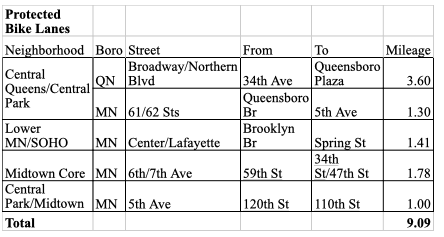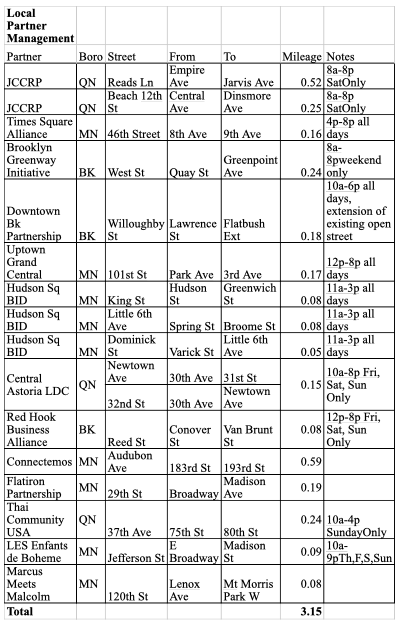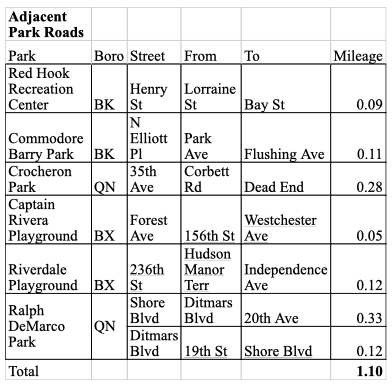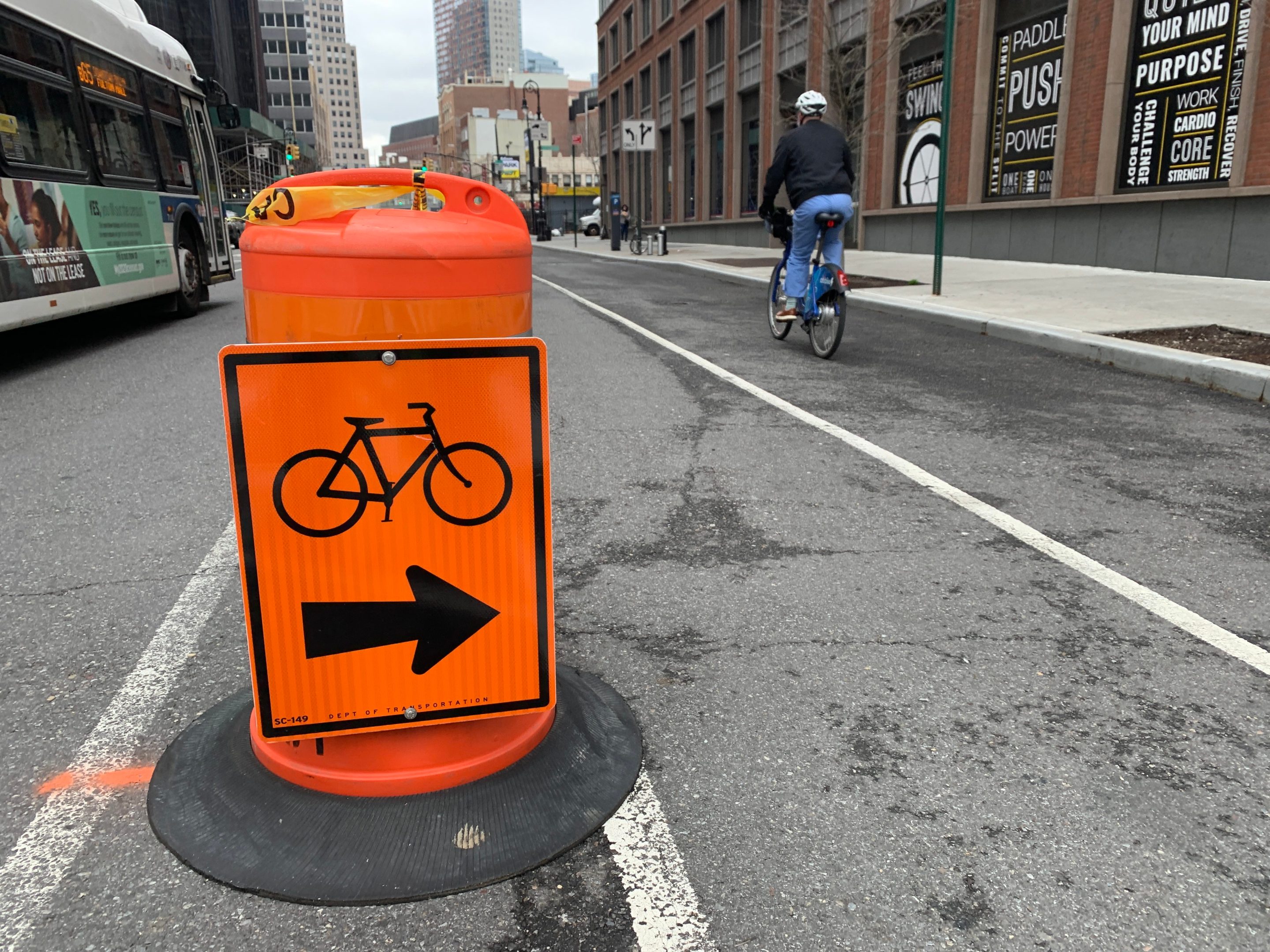The city is dramatically expanding the number of temporary protected bike lanes it is installing in response to the pandemic-stoked surge in biking, including some key corridors in Manhattan and Queens, Mayor de Blasio announced today.
The city will create nine more miles of the lanes, doubling the number of temporary (and flawed) protected lanes it installed last month as part of its “Open Streets” initiative. The city will also add 13 miles of open streets in areas it says were heavily affected by the coronavirus pandemic, meaning that the city has now committed to or created, 67 miles of open streets plus temporary protected bike lanes, or two-thirds of the 100 miles that de Blasio promised in April.
“We have so many different kinds of models,” said the mayor of open streets today during his press briefing. "This is going to be great for people looking for a break this summer."
The new bike lanes are:
- Broadway/Northern Boulevard from 34th Avenue to Queensboro Plaza in Queens
- Sixth and Seventh avenues from 59th Street to 34th/47th streets in Midtown Manhattan
- Centre/Lafayette from Spring Street to Brooklyn Bridge in Soho
- Fifth Avenue from 120th to 110th streets in Harlem (a busy bus route). (A cyclist was recently killed lower down on Fifth Avenue by a bus driver.)

The new lanes are literally a matter of life or death. Thousands of commuters have taken to bikes during the pandemic, many of them in order to avoid transit. Advocates have warned that a crush of newbie cyclists on streets, just as car traffic revs up as the city reopens, portends a horrific season of deaths and injuries from crashes. Early indications showed that bike injuries have mounted during the coronavirus crisis.
The open streets have proved so successful that various communities, such as Jackson Heights in Queens, have advocated to make them permanent. Still, many open streets have suffered from lax enforcement: Motorists have plowed through in some areas, leaving broken wooden barricades. The same is true of protected bike lanes: Motorists constantly invade them for parking and standing, creating dangers.
Hey the Jay street bike lane is filled with @placardabuse can you help us out?
— NYC Bike Lanes (@NYCBikeLanes) June 17, 2020
New open streets will provide a respite for neighborhoods in lower Manhattan, Staten Island, and Far Rockaway in Queens, the city says. Many are being undertaken in partnership with business-improvement districts or other community organizations. Like earlier open streets, some will be next to parks.
“With summer now in full swing, and the city slowly reopening, we’re excited to bring new open streets to more communities, from the North Shore of Staten Island to Far Rockaway in Queens, along with new protected bike connections to Central Park and the Queensboro Bridge,” DOT Commissioner Polly Trottenberg said in a statement.


The Department of Transportation will erect the temporary bike lanes over the summer using a variety of “markings, barrels, signage, and other barriers” and will add so-called Green Wave signal-timing changes, which speed bike commutes, on DeKalb and Lafayette avenues in Brooklyn, the announcement said.
Reaction to the news was generally positive on Twitter, although some questioned the city's lumping together of open streets and protected bike lanes, which have very different uses:
Question, though, one I've asked before: Why include #bikenyc lanes in #openstreetsnyc? Bike lanes (routes for bikes) are *not* #openstreets (more open public space for all). I'd want to see @NYCMayor meet goal of 100 mi open streets *and* more bike lanes https://t.co/yZwiQtMUO3 pic.twitter.com/8yuw2FsmRl
— David Herman (@DHermanStudio) June 24, 2020
"This is welcome news, but I hope that in addition to increasing the quantity of open streets and temporary bike lanes the city also focuses on improving the quality of existing ones," cycling advocate Doug Gordon said of the expansion. "As we’ve all seen, haphazardly placed barrels do not a protected bike lane make."







